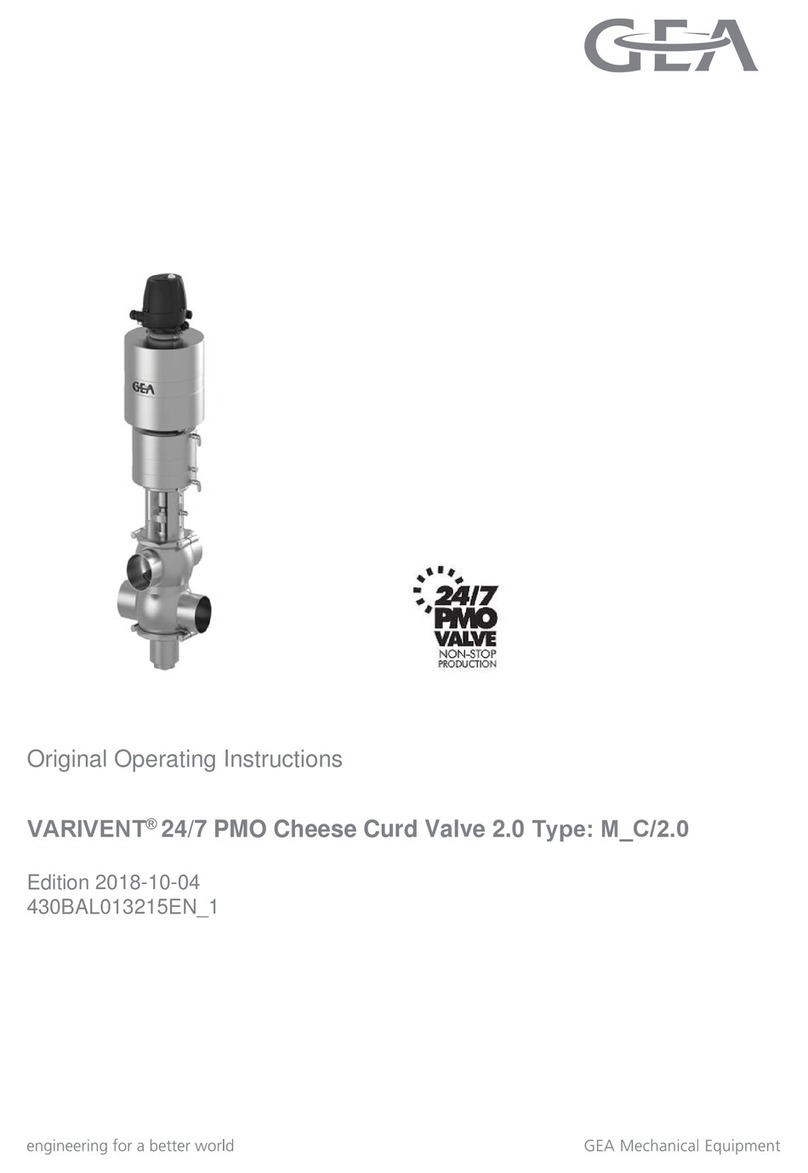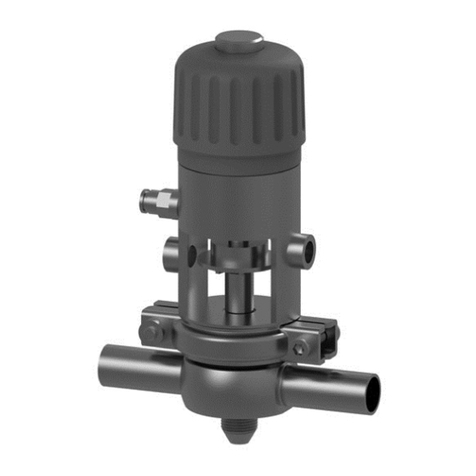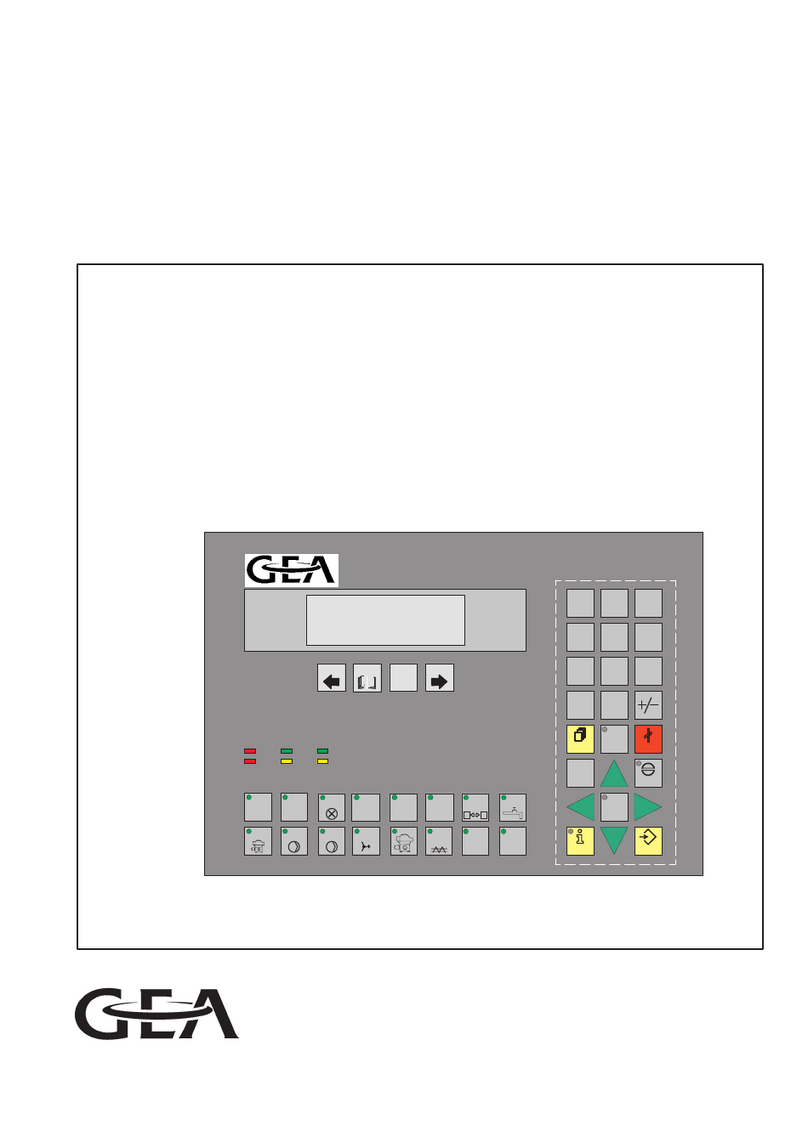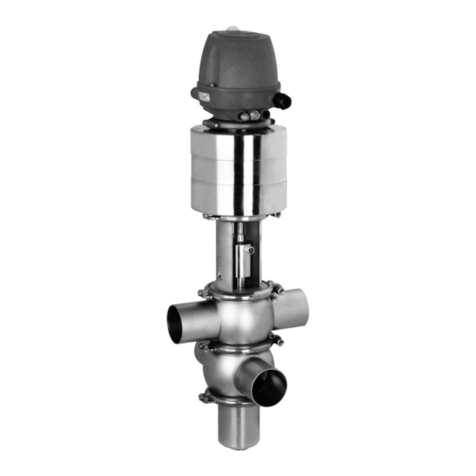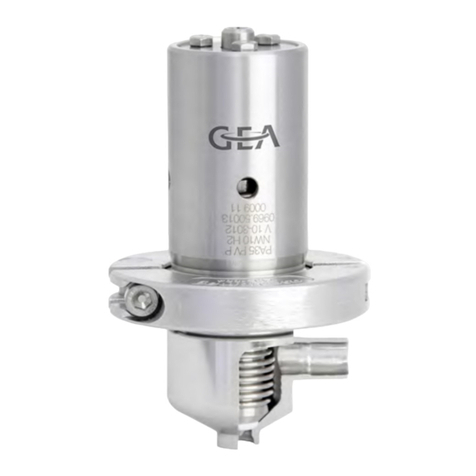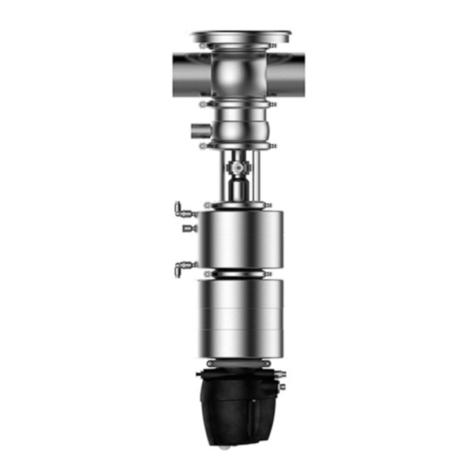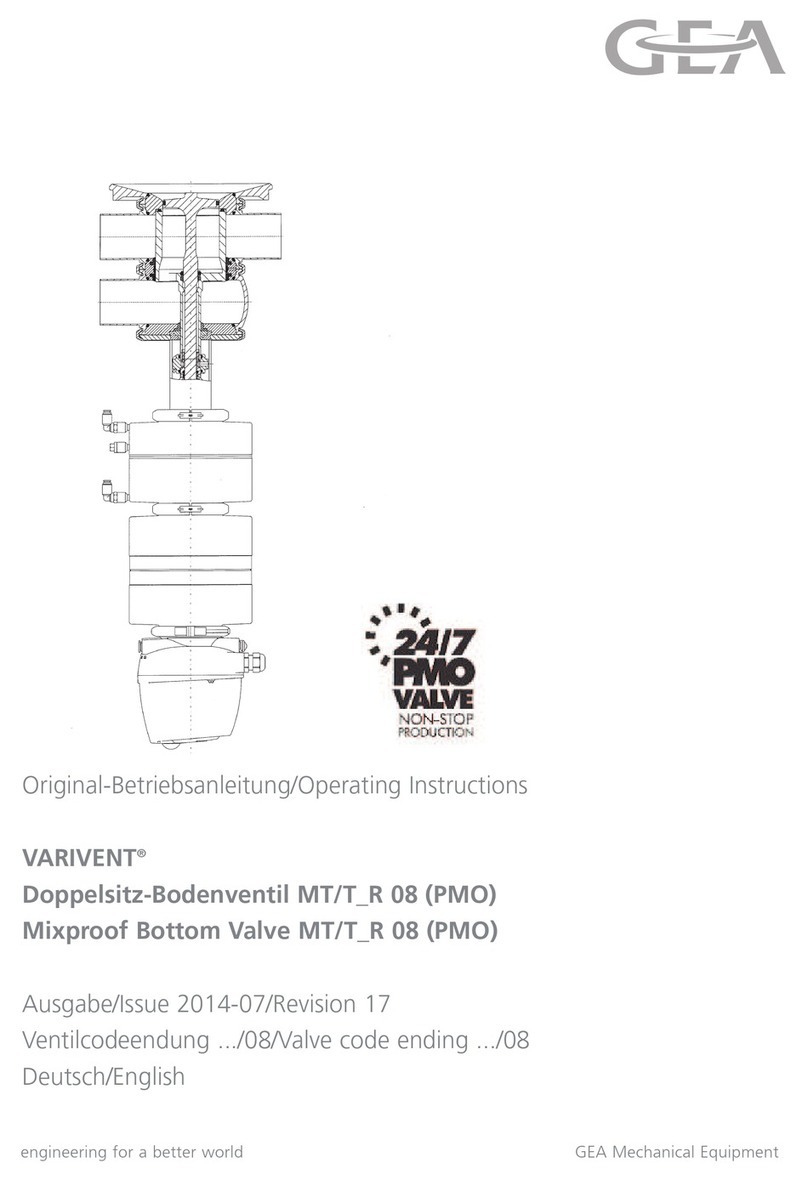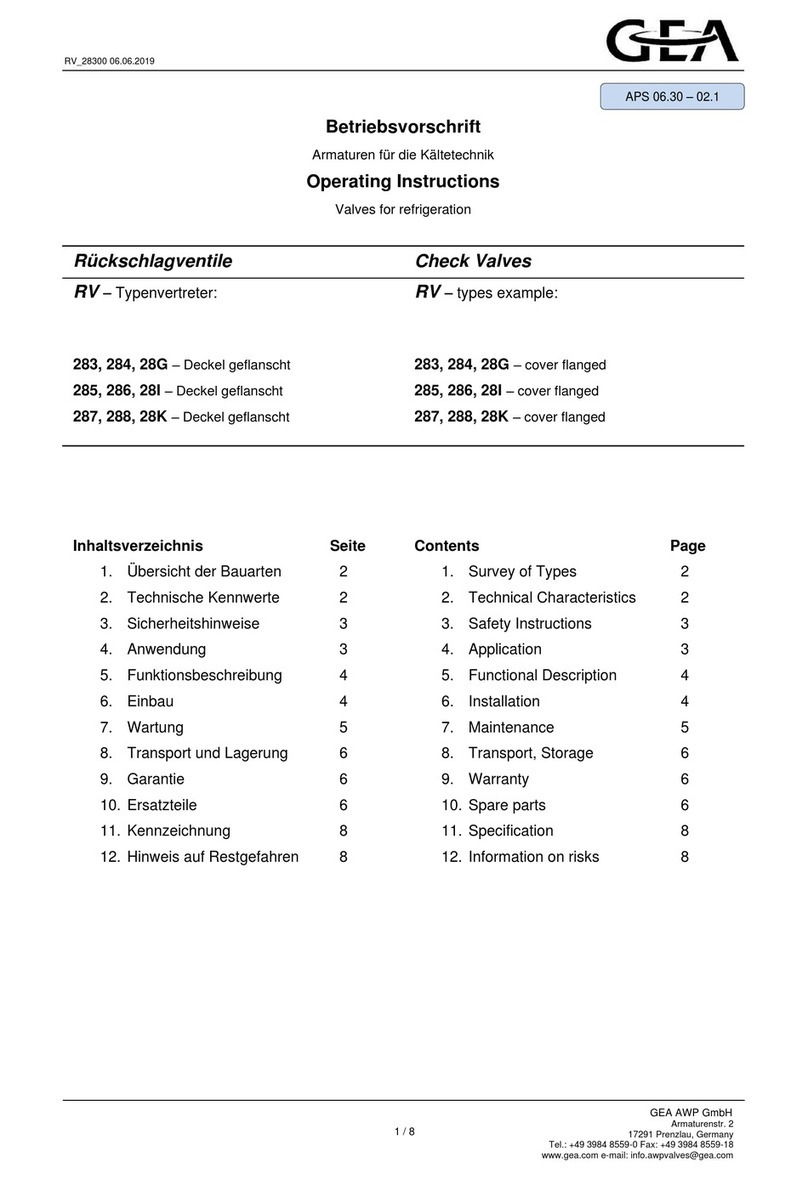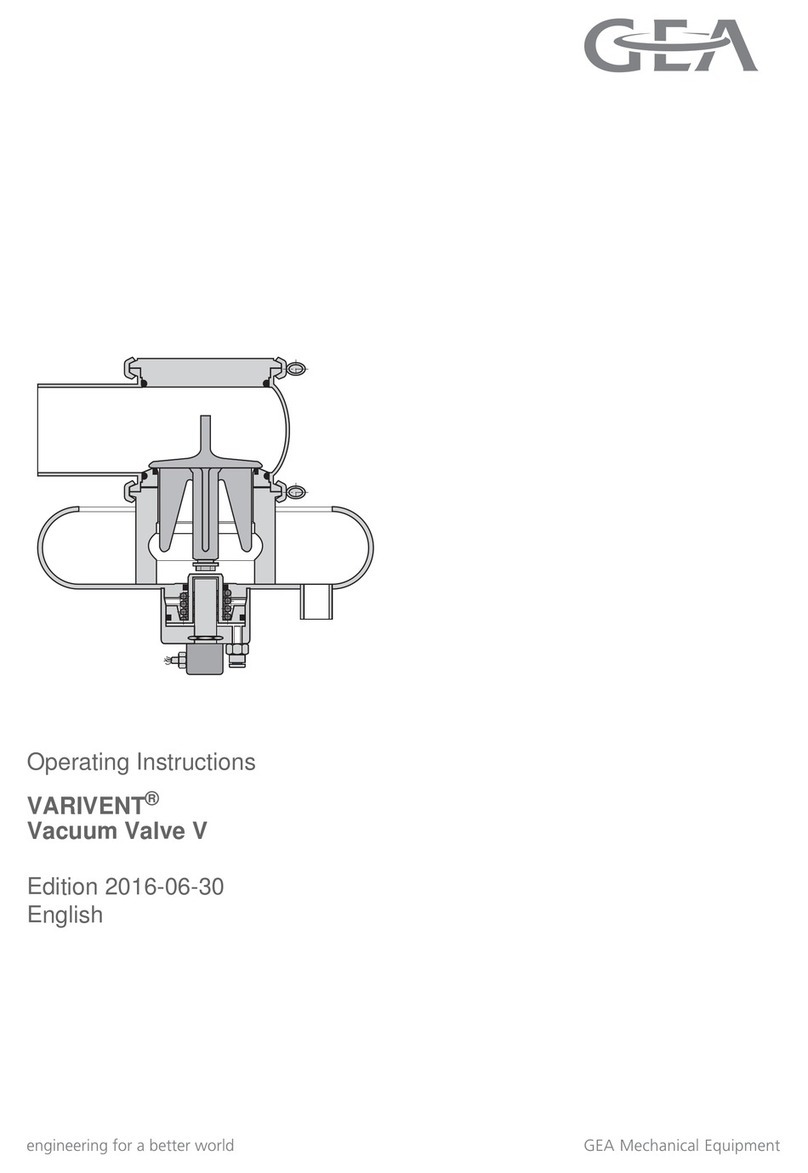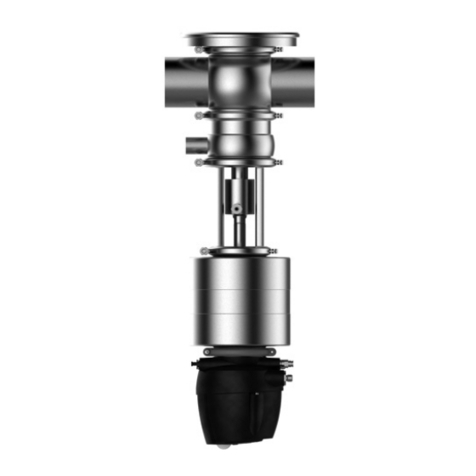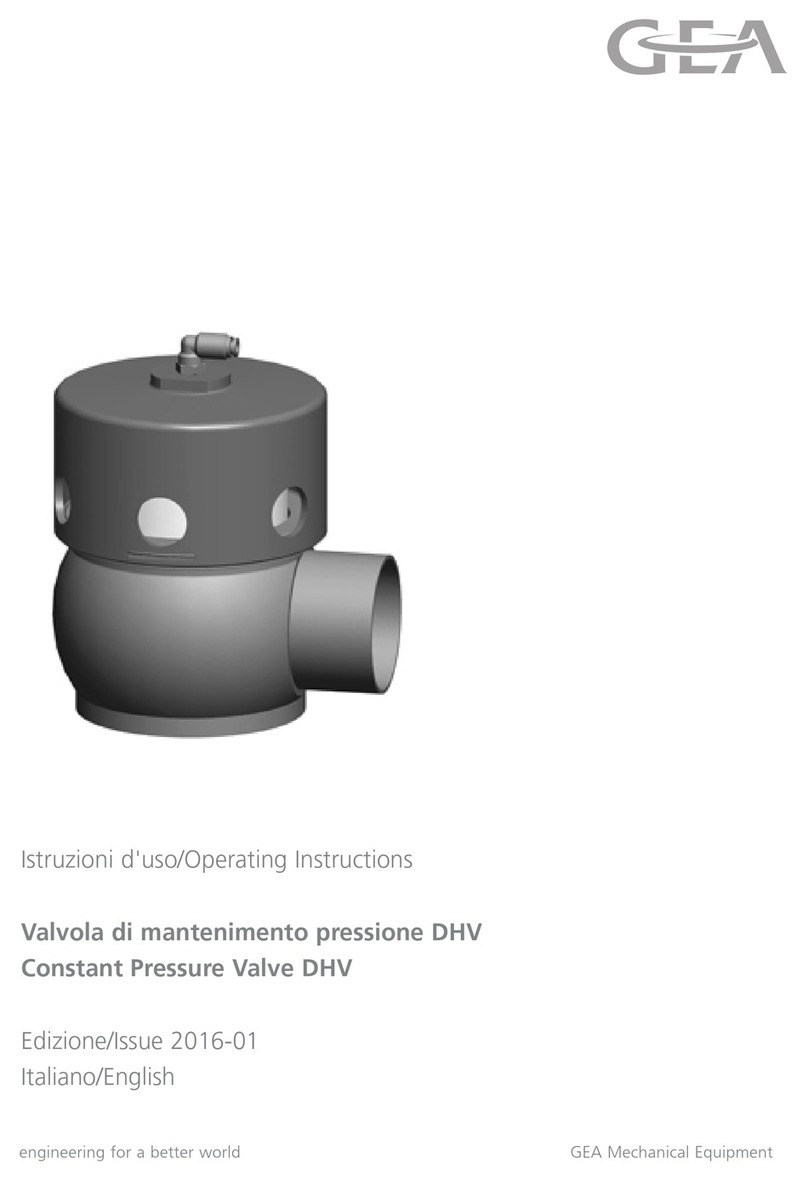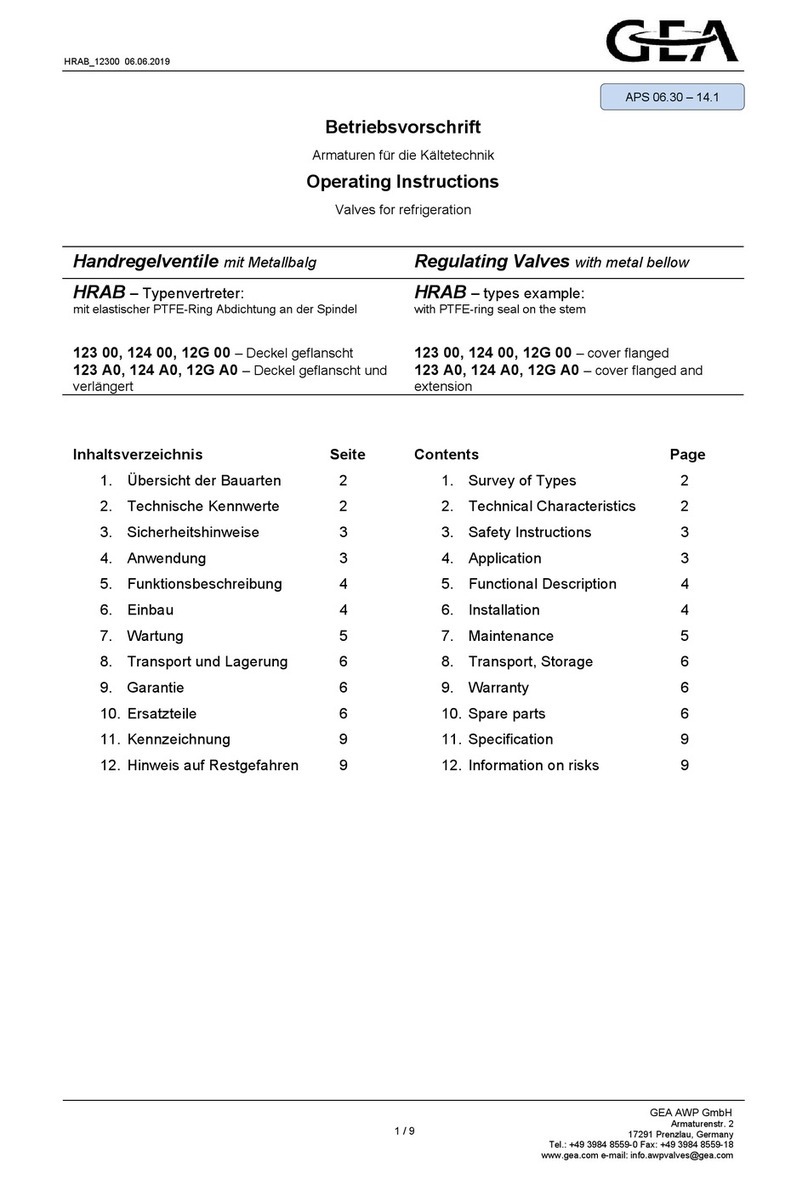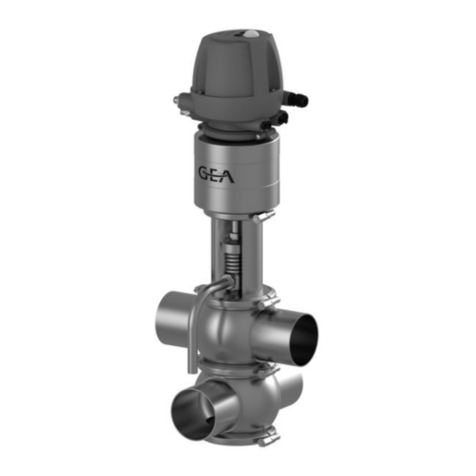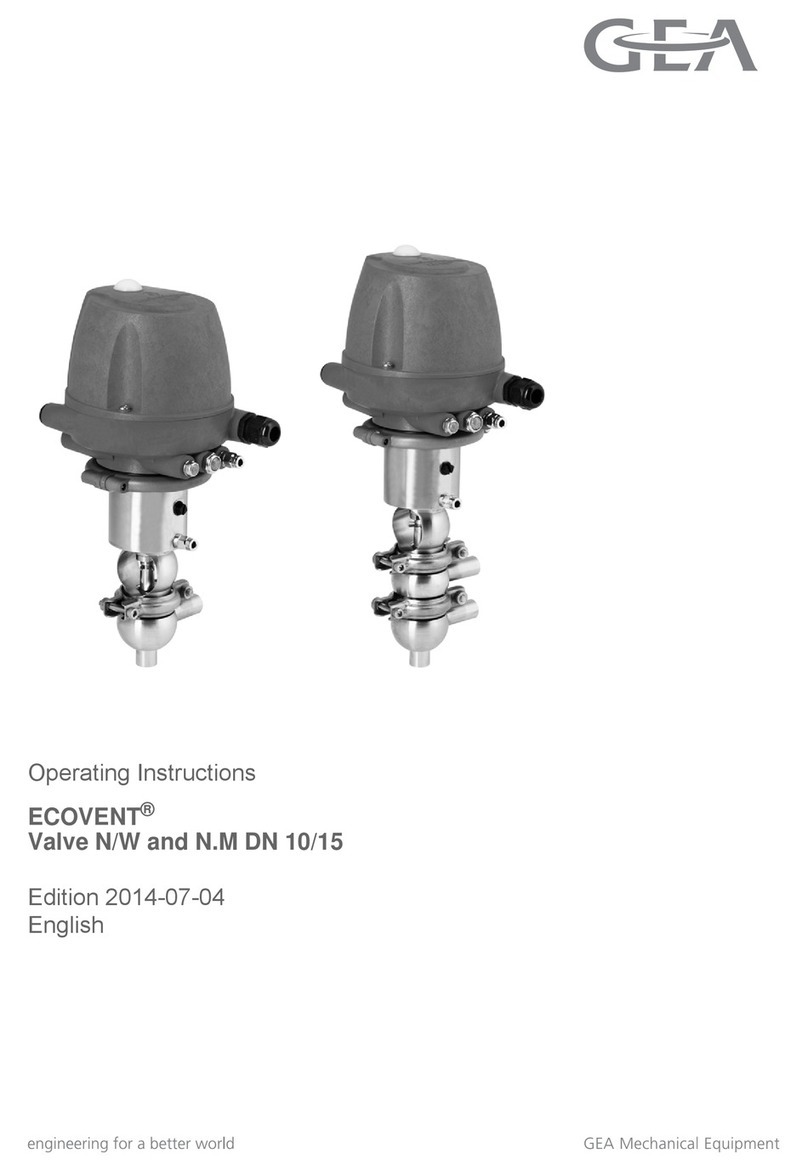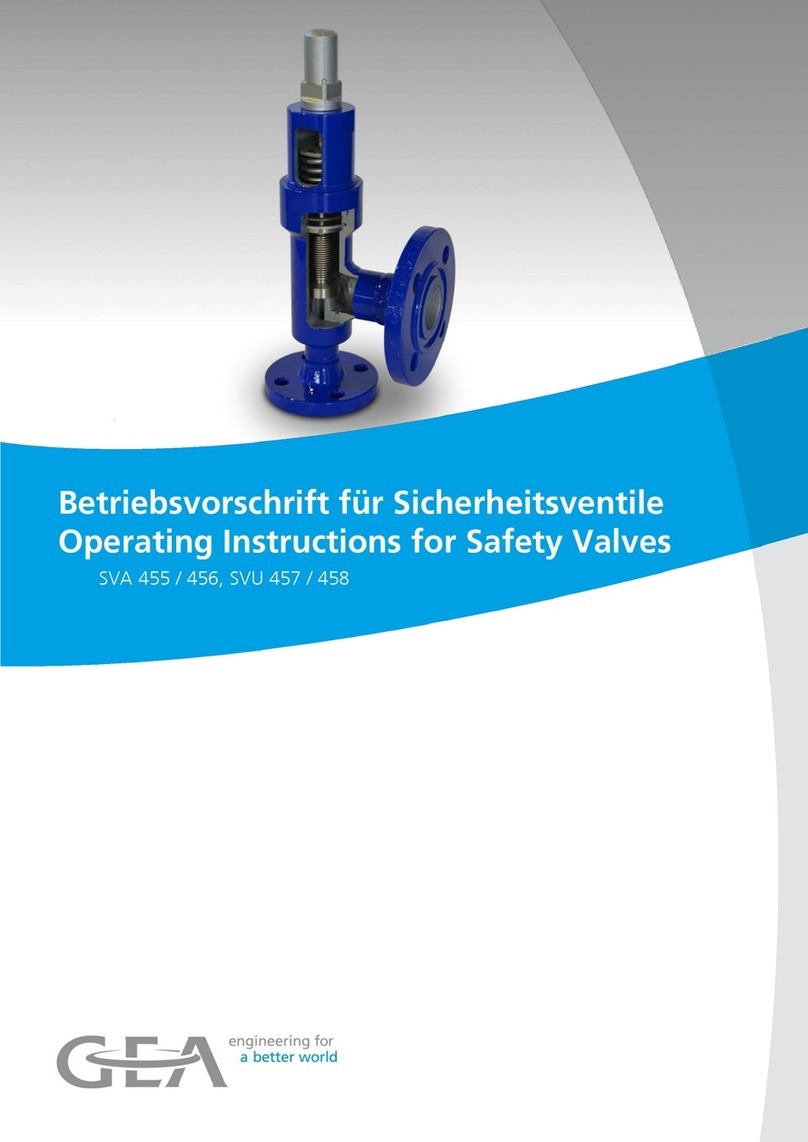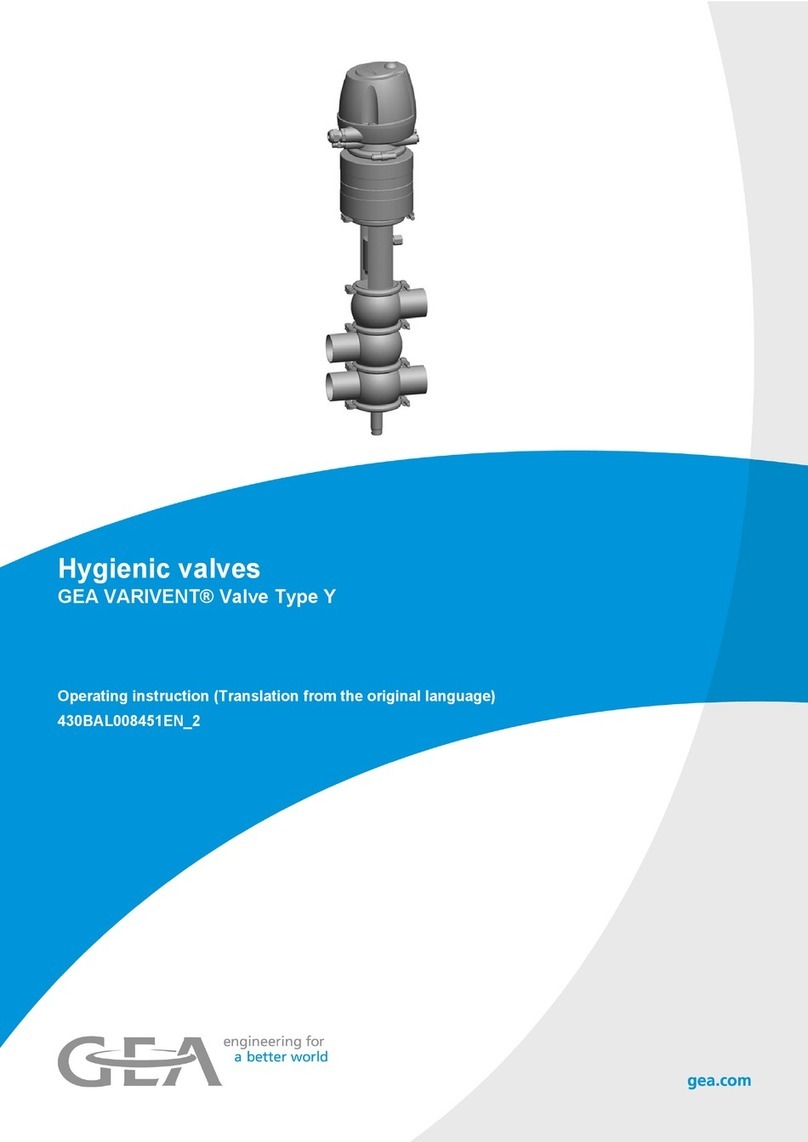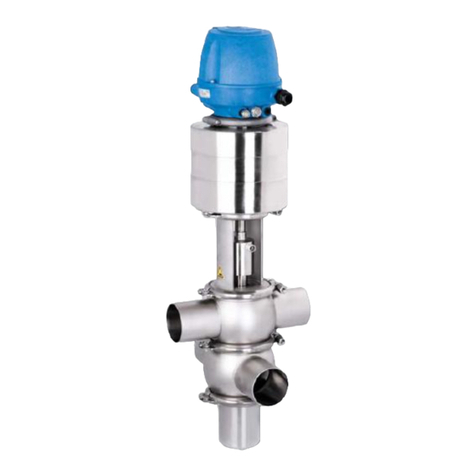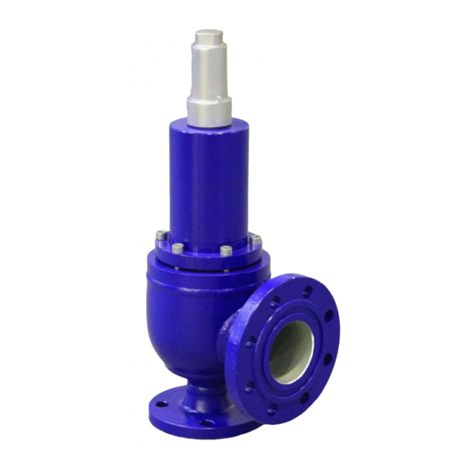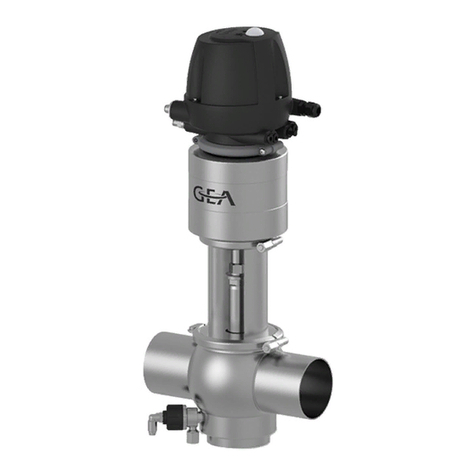1
2016-07 · VESTA Sterilventile · Tankbodenventil H_A/T / VESTA Sterile Valves · Tank bottom valve H_A/T
Contents
Important Abbreviations and terms ...................... 2
Safety instructions .................................................. 4
Designated use .................................................... 4
Personnel.............................................................. 4
Modifications, spare parts, accessories .............. 4
General instructions ............................................ 4
Marking of safety instructions in the
operating manual................................................ 5
Further symbols .................................................. 5
Special hazardous spots ...................................... 6
Designated use ........................................................ 7
Transport and Storage ............................................ 7
Checking the consignment ................................ 7
Weights ................................................................ 8
Transport .............................................................. 8
Storage ................................................................ 9
Design and Function .............................................. 9
Changing the actuator’s function .................... 10
Assembly and Operation ...................................... 10
Installation position .......................................... 10
Welding the housing connection H_A/T/F
into the tank ...................................................... 11
Welding the housing H_A/T into the tank ...... 12
Valve with detachable housing connections .. 13
Pneumatic connections .................................... 13
Electrical connections........................................ 14
Commissioning .................................................. 14
Malfunction, Cause, Remedy................................ 15
Maintenance .......................................................... 16
Inspections .......................................................... 16
Maintenance intervals........................................ 16
Prior to dismantling the valve .......................... 17
Dismantling / Mounting the valve .................... 17
Dismantling / Mounting the pneumatic
actuator ............................................................ 19
Dismantling/Mounting the manual actuator .. 26
Wartung .............................................................. 28
Check the function ............................................ 30
Resistance of the Sealing Materials .................. 30
Technical Data ........................................................ 31
Tools / Lubricant ................................................ 32
Housing connections ........................................ 32
Annex
Spare parts lists
Dimension sheets
Welding instructions – Housing connections H_A/T/H
Housing connections H_A/T/H
Spare parts list – Turn-over jig H_A/T
Declaration of Incorporation
Inhalt
Wichtige Abkürzungen und Begriffe .................... 2
Sicherheitshinweise................................................. 4
Bestimmungsgemäße Verwendung .................. 4
Personal................................................................ 4
Umbauten, Ersatzteile, Zubehör ........................ 4
Allgemeine Vorschriften .................................... 4
Kennzeichnung von Sicherheitshinweisen in
der Betriebsanleitung.......................................... 5
Weitere Hinweiszeichen...................................... 5
Besondere Gefahrenstellen ................................ 6
Verwendungszweck ................................................ 7
Transport und Lagerung ........................................ 7
Lieferung prüfen ................................................ 7
Gewichte .............................................................. 8
Transport .............................................................. 8
Lagerung .............................................................. 9
Aufbau und Funktion ............................................ 9
Funktion des Antriebs umbauen ...................... 10
Einbau und Betrieb................................................ 10
Einbaulage ........................................................ 11
Gehäuseanschluss H_A/T/F in den Tank
einschweißen .................................................... 11
Gehäuse H_A/T in den Tank einschweißen ...... 12
Ventil mit lösbaren Rohranschlusselementen 13
Pneumatischer Anschluss .................................. 13
Elektrischer Anschluss........................................ 14
Inbetriebnahme ................................................ 14
Störung, Ursache, Abhilfe .................................... 15
Instandhaltung ...................................................... 16
Inspektionen ...................................................... 16
Instandhaltungsintervalle .................................. 16
Vor der Demontage............................................ 17
Demontage – Montage des Ventils .................. 17
Demontage – Montage des pneumatischen
Antriebs .............................................................. 19
Demontage – Montage des Handantriebs ...... 26
Wartung .............................................................. 28
Funktion prüfen.................................................. 30
Beständigkeit der Dichtungswerkstoffe............ 30
Technische Daten .................................................. 31
Werkzeug / Schmierstoff .................................. 32
Gehäuseanschlüsse ............................................ 32
Anhang
Ersatzteillisten
Maßblätter
Schweißanweisung – Gehäuseanschluss H_A/T/H
Gehäuseanschluss H_A/T/H
Ersatzteilliste – Schweißvorrichtung H_A/T
Einbauerklärung
